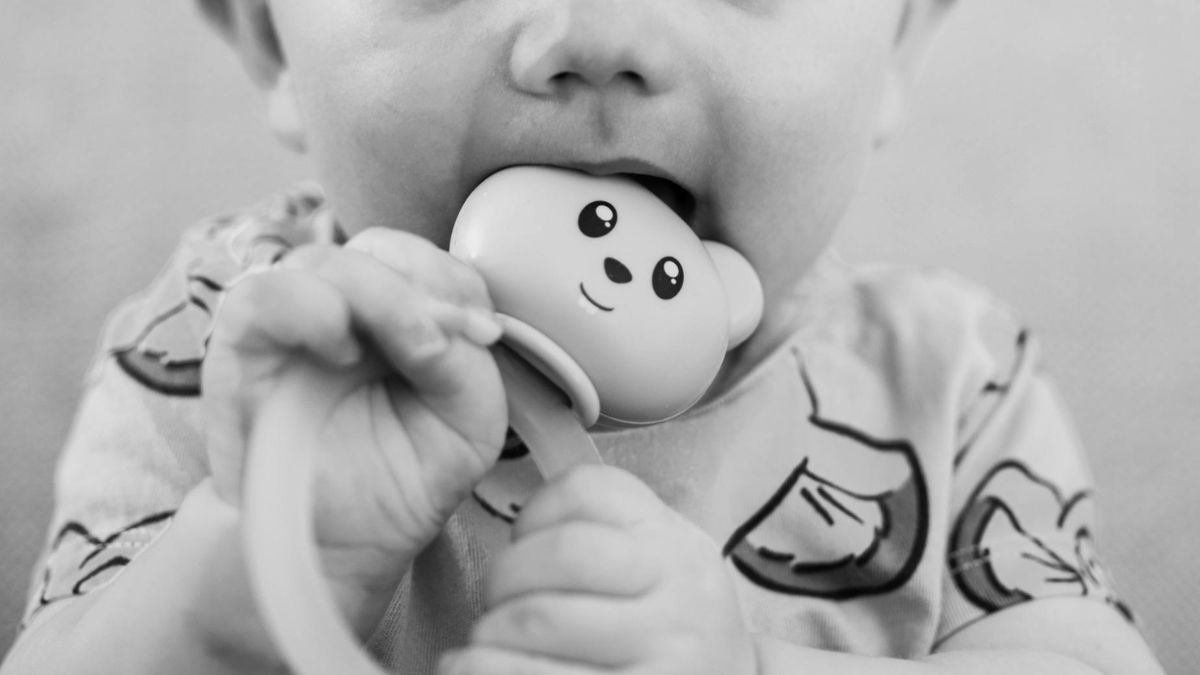Signs of The 4-Month Sleep Regression & 3 Simple Solutions To Help You Through It
Whether you’re still sleep deprived or feeling like you’re finally getting a routine down — when the 4-month sleep regression hits, it rocks your world. You desperately need your baby to sleep at night, for everyone’s sake!
If your baby’s not quite 4 months, read on to feel prepared. If you’re dealing with this normal but challenging phase, let’s get you through with evidence-based solutions. I became The Sleep Lady by helping tens of thousands of families achieve gentle sleep, and I’m ready to guide yours.
Today we’ll discuss the 4-month sleep regression and how long it lasts, plus signs and solutions to help your family cope during this milestone.
get the interactive
newborn sleep
digital planner
for better nights
and happier days
What Does “The 4-Month Sleep Regression” Even Mean?
Rest assured (pun intended) that a “regression” is really a developmental milestone. Developmental milestones that cause the most sleep disruptions are those that are associated with physical milestones such as rolling, crawling, and walking.
And yes, some babies at this age learn to roll; the 4-month sleep regression actually includes a change in your baby’s sleep cycles. They enter into sleep from a more wakeful state and wake more completely as they transition inbetween sleep cycles. In other words, your baby may now have a harder time going to sleep and will wake up more during the night. .
At the same time your baby is more aware of the world around them than before. So if they fall asleep in your arms or on the floor, now it’s disorienting to wake up in their crib. They recognize the new scene but don’t understand how they got there. Of course, this feels scary, so they cry.. Instinctively, your baby looks for and craves your comfort.
You may have heard of the Wonder Weeks book or app. They call milestones “leaps” because your baby will be learning new skills. Around 4 months, Wonder Weeks states that babies increase in the 3 “C’s” including; crying, crankiness, and clinginess. Remember, this too shall pass!
Sleep disruption impacts the whole family, and it’s tough. Whether you were just getting a routine down or you were simply sleeping more — it hugely impacts your overall well-being. Being exhausted makes everything else in life harder. Thankfully, it doesn’t last forever.
How Long Does The 4-Month Sleep Regression Last?
You might get tons of different answers online. Some evidence suggests this particular regression can last longer than others, since it specifically changes your baby’s sleep.
Sleep’s a complex topic, particularly with a newborn. Lots of other issues can cause sleep disturbances, like teething, illness, a new environment, reflux, allergies and changes in family dynamics.
Read more on sleep regressions in our blog: Sleep Regressions — What Are They, and When Will They End?
While it can take time to work through, let your biggest takeaway be not to create new sleep crutches (as I like to call them) for your baby. Instead of throwing in the towel, hold onto hope and keep up with your schedule. We don’t want to backtrack too much on good sleep habits because of the 4-month sleep regression bump. It’ll be over soon.
My team and I are here to guide your family on the path of a good night’s sleep. Let’s learn more about signs your newborn may be entering the 4-month sleep regression.
Signs Your Baby’s Nearing the 4-Month Sleep Regression
Every single child has their own personality and unique needs, and reaches milestones at different times. It’s important to keep in mind your baby’s gestational or adjusted age if they were born early. For example, if your baby is five months old, but came 2 months early, their adjusted age would be 3 months. When considering sleep expectations, always go by your baby’s adjusted age.
When your baby nears the 4-month mark, look for changes in their sleep behavior. While it’s an important developmental point in their cycle, you can’t expect them to sleep through the night like an adult. A nice 5-hour stretch is normal (and great!) for a 4-month-old.
If you were hoping for a solid 8 hours, sorry to burst your bubble. It’s good to know the reality of the situation to adjust your expectations. (We know from experience that sleeping 5 hours straight feels amazing when it happens with a newborn.)
Major signs of the 4-month sleep regression:
- Baby becomes fussier
- Bedtime routine goes out the window
- More night wakings
- More night feedings (again)
- The schedule you had becomes harder to follow
If you’re thinking, “YES Kim, exactly what’s happening to us!” — fear not. Get answers to this and so much more in my newborn sleep guide book (pre-order it now so you can get it when it becomes available on March 21, 2023). For now, let’s go over simple methods you can start today!
get the interactive
newborn sleep
digital planner
for better nights
and happier days
3 Simple Solutions To Start Guiding Your 4-Month-Old To Sleep Better
You just want to get some good sleep, and no one understands like us. You love your baby more than life itself but can’t function day in and day out when you’re exhausted. It’s overwhelming when your baby suddenly fusses more, so try these solutions to help you through this giant milestone.
1. Respond to your baby’s sleep cues ASAP
When you’re trying to get your newborn to sleep, it can feel like you know nothing, but you do. You may be starting to notice different cries for hunger versus comfort for example. Responding to these cues fast builds trust and security with your baby.
Try my SOAR method, which aids in communicating with your baby. In reality, you’re both learning how to understand each other right now. When you respond to your baby’s cues and meet their needs, it supports your bond with them and, in turn, their ability to sleep better. (Yes, it all ties in!)
SOAR means you Stop, Observe, Assess, and Respond.
Stop for you and take a breath. It helps.
Observe your surroundings.
Assess your baby’s reaction, movement, cry, etc.
Respond to your baby’s needs, whatever you think it is.
Remember, you know your baby best and YOU are the best parent for your child. If you thought it was a diaper change and it’s not, that’s okay. Move to the next likely culprit. You got this!
2. Be consistent with your bedtime routine
This doesn’t mean you should be a prisoner to the clock. Minor tweaks every day happen — especially while trying to get a newborn to sleep. Consistency wires your baby to know what to expect. Like quickly responding to sleep cues, it helps soothe their nervous system.
Even at such a young age, the 4-month sleep regression is a time to stick to nap and bedtime routines. This makes a huge difference for the whole family. Sometimes it’s hard to remember your own well-being when you’re trying to keep a baby happy and healthy. Your sleep matters too!
Your routine doesn’t need to be some hour-long production that you dread every night. It can be as simple as feeding and singing a song while rocking. A very popular nighttime routine includes a bath, since warm water naturally tends to relax us. Every baby’s different, so find out if a gentle bath calms yours. Speaking of calm, this next tip is big.

3. Calm your home environment with my 3pm rule
Believe it or not, one of the main reasons your baby might be fussy or harder to soothe at night comes from being overstimulated. The coffee grinder, TV, and lights might not overstimulate you, but to a baby, everything’s new and such a big experience. By the late afternoon, some (not all) babies literally break down in tears. It’s just too much.
Serving families and supporting their babies’ sleep habits for over 25 years, I’ve found that keeping a calm environment between 3pm and 7pm can reduce fussiness. I know, it probably feels super early. But if it helps your newborn relax, is it worth a shot?
Follow My 3 pm Rule To Help Get Your 4 Month Old Ready For Sleep:
- Turn off the TV and loud music/noises
- Dim lights
- Rock or soothe your baby by humming or singing softly
- Bring your baby into a separate calming room– either temporarily or for the full period if needed….especially when your other children or spouse get home
- Have a separate room to go into for the rest of the evening
One study shows that newborns sleep longer in darkened rooms. If you don’t have blackout curtains, a dark sheet or blanket over the window goes a long way.
If you have other children, we know creating a calm environment can seem like a hurdle. Remember — this 4-month regression is temporary. We can do anything for a few weeks, right? Take a deep breath and try to incorporate what you can. You may be surprised by the soothing effect the 3 pm rule has on the entire family.
The Sleep Lady & Team Support Your Family’s Sleep
As a family therapist and mom, I know how tired you are. I remember those tough days like yesterday. The Sleep Lady was born because I simply could not sit and listen to my daughters cry, and think it was helping our bond — or their sleep. I just knew there had to be a better way — and I found it.
Now, my books and teams of Certified Gentle Sleep Coaches guide families to better sleep every day…all without leaving a baby to cry it out alone. We’ve proudly transformed over 1 million lives and counting! You don’t have to struggle with how to get your baby to sleep or survive the 4-month sleep regression. We’re here for you.




